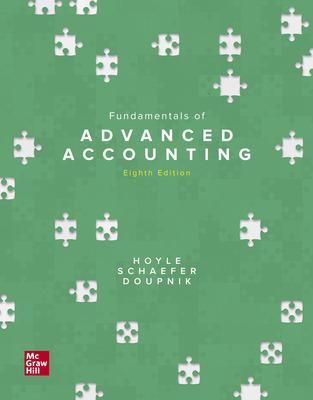Question
For allt e R consider the triangle having vertices in P = (3, 2,1). P = (t, 1, 1), Ps (1,2, t). %3D %3D

For allt e R consider the triangle having vertices in P = (3, 2,1). P = (t, 1, 1), Ps (1,2, t). %3D %3D Which of the following statements is true? O (a) There is no value of t such that the edges P P, and P Pa are orthogonal. (b) The edges P P, and PP are orthogonal for t 3 (C) The edges P P, and P P, are orthogonal for two different values of t. (d) The edges PP, and P. P, are orthogonal for at least one value of t
Step by Step Solution
3.46 Rating (156 Votes )
There are 3 Steps involved in it
Step: 1

Get Instant Access to Expert-Tailored Solutions
See step-by-step solutions with expert insights and AI powered tools for academic success
Step: 2

Step: 3

Ace Your Homework with AI
Get the answers you need in no time with our AI-driven, step-by-step assistance
Get StartedRecommended Textbook for
Fundamentals Of Advanced Accounting
Authors: Joe Ben Hoyle
8th Edition
1260575926, 978-1260575927
Students also viewed these Mathematics questions
Question
Answered: 1 week ago
Question
Answered: 1 week ago
Question
Answered: 1 week ago
Question
Answered: 1 week ago
Question
Answered: 1 week ago
Question
Answered: 1 week ago
Question
Answered: 1 week ago
Question
Answered: 1 week ago
Question
Answered: 1 week ago
Question
Answered: 1 week ago
Question
Answered: 1 week ago
Question
Answered: 1 week ago
Question
Answered: 1 week ago
Question
Answered: 1 week ago
Question
Answered: 1 week ago
Question
Answered: 1 week ago
Question
Answered: 1 week ago
Question
Answered: 1 week ago
Question
Answered: 1 week ago
Question
Answered: 1 week ago
View Answer in SolutionInn App



